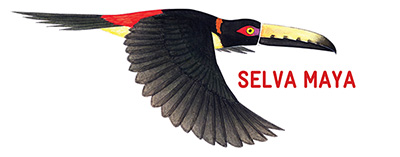 The tropical forest
The tropical forest
THE SELVA MAYA
The presence of an important ecological and environmental gradient has resulted in more than 20 ecosystems, from the evergreen forests of Peten to the dry forests in the northern Yucatan Peninsula. These ecosystems play an important role in provisioning water and maintaining landscape connectivity since multiple ecological corridors in the region allow mobility between organisms and species as well as ecosystem functioning as a whole.
PEOPLE AND CULTURE
This great diversity offers high potential for productive intercultural work. Communities that inhabit the Selva Maya depend on the same natural resources. To ensure the long-term existence of the Selva Maya and its population, it is necessary to propose sustainable alternatives for the use of resources, to establish regional governance mechanisms, to strengthen management capacities of those responsible for the protected areas, and to advocate public policy through decision-makers; all in an environment of intercultural cooperation.
FLORA AND FAUNA
- Highly endangered species, such as the scarlet macaw, jaguar and tapir
- Species endemic to the Selva Maya, including the white turtle or hickatee (Dermatemys mawii), the Yucatan brown brocket (Mazama pandora), the black howler monkey (Alouatta pigra) and the ocellated Turkey (Meleagris ocellata)
- Species of flora and fauna which provide important alternative income and/or are a food source for the rural population, including the breadnut or Ramón tree (Brosimum alicastrum), chicle tree (Manilkara sapota), cocoa tree (Theobroma cacao) and Africanized honey bees.

